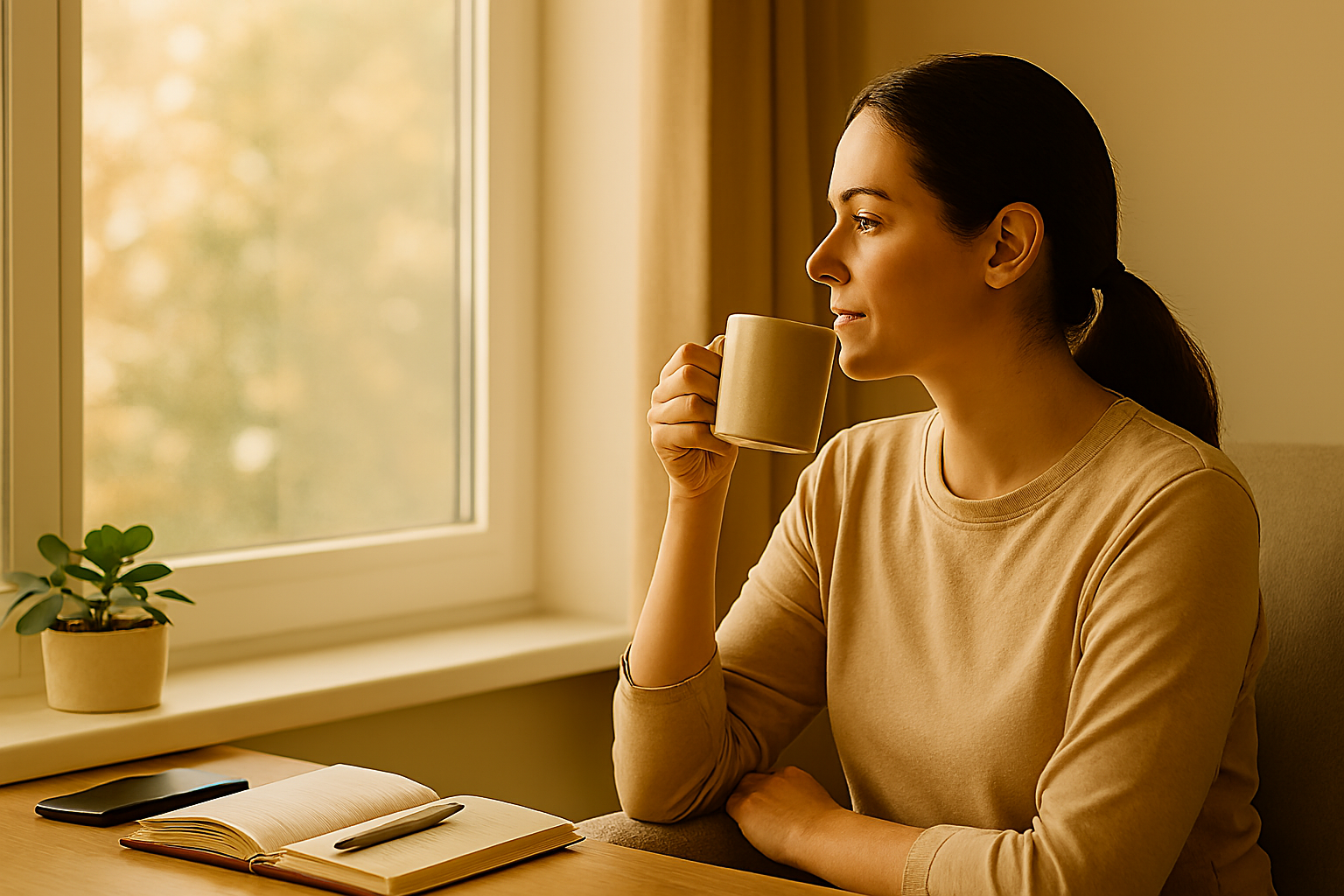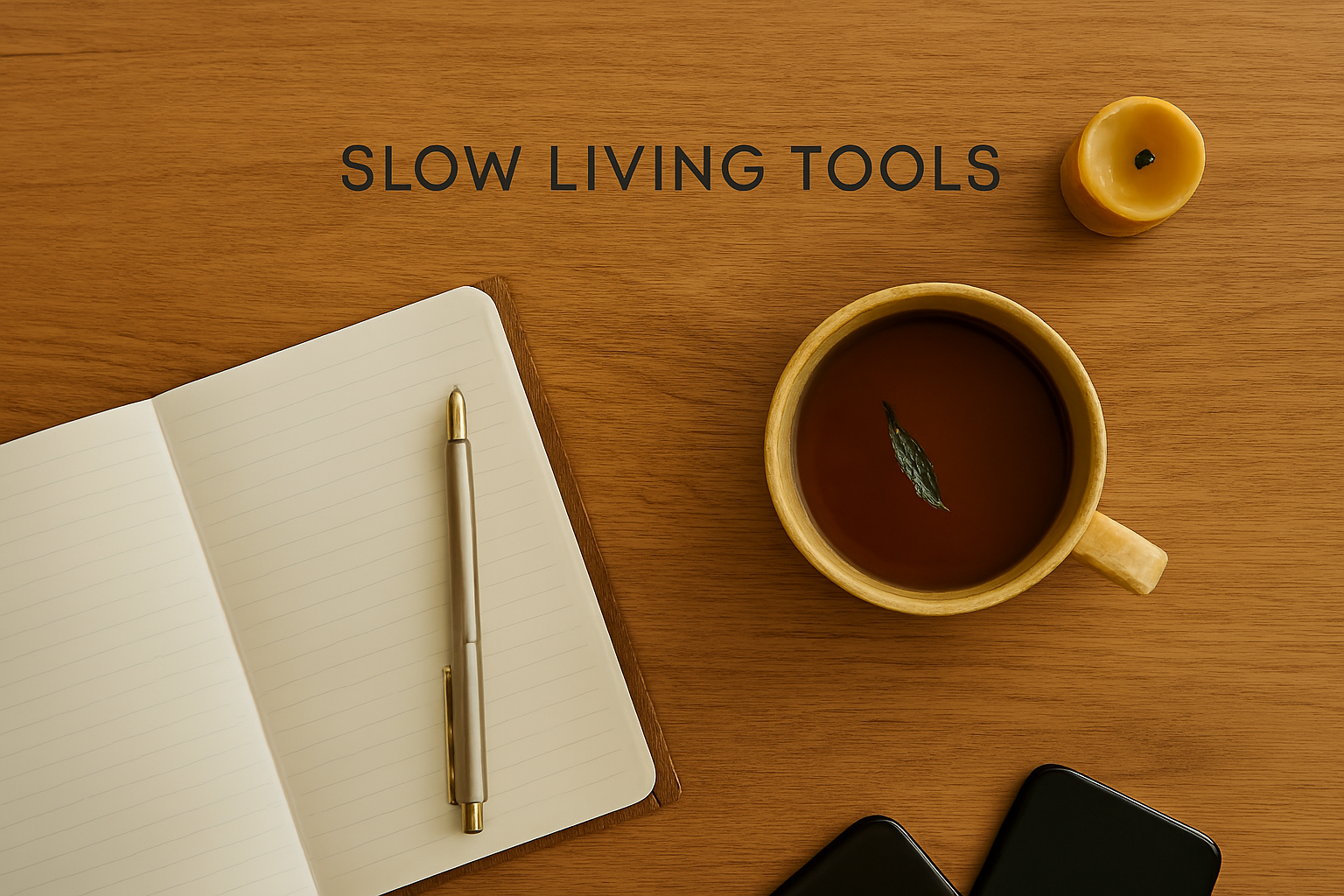Slow Living: How to Find Peace in a Fast-Paced World

Picture this: you wake up to a chorus of notifications, scroll through endless updates while your coffee grows cold, rush through a morning routine that feels more like a race, and arrive at your first meeting already feeling behind. Your day unfolds in a blur of tasks, deadlines, and digital demands, leaving you exhausted.

Sound familiar? As we move deeper into 2025, there is a beautiful counter-movement gaining momentum. It is called slow living, and it is becoming a necessity for those craving deeper meaning, genuine connection, and the kind of peace that comes from living intentionally rather than reactively. What if doing less, more mindfully, could actually make life feel fuller?
What Is Slow Living?
Slow living is not about moving at a snail's pace or abandoning your goals. It is about being present, intentional, and deeply in tune with your own needs and rhythms. Think of it as the art of living with purpose rather than pressure. At its core, slow living is about valuing calm, space, and depth over speed, quantity, and surface-level achievement.
It is choosing quality conversations over constant connectivity and savoring meals instead of eating on autopilot. This approach has gained traction among those experiencing digital burnout and a growing awareness that success does not have to come at the expense of inner peace. It is recognizing that rest is not something you have to earn; it is something you deserve.
The Urgent Need for a Slower Pace
We are collectively questioning what it means to live well. Remote work has blurred the boundaries between personal and professional time, and our relationship with technology has reached a tipping point where many of us feel more connected yet more isolated than ever.
Research consistently shows that when we slow down, we experience improved mental clarity, better sleep, and enhanced focus. Studies on mindfulness reveal that people who practice slower, more deliberate approaches to daily life report greater life satisfaction and reduced feelings of overwhelm. The slow living movement is not asking us to abandon our ambitions. Instead, it is inviting us to engage more thoughtfully and create rhythms that support our long-term wellbeing.

8 Simple Ways to Embrace Slow Living
1. Start Your Mornings Without a Screen
Give yourself the gift of easing into consciousness naturally. Use the first few minutes of your day to stretch, breathe deeply, or simply notice how you are feeling before inviting the outside world into your mental space.
2. Declutter One Small Space Slowly
Instead of attempting massive organization overhauls, choose one small area, a drawer, a shelf, or your nightstand, and tend to it mindfully. This gentle approach to creating physical space often creates mental space too.
3. Cook a Meal Without Distraction
Choose one meal each week to prepare with complete presence. Put away your phone, turn off the television, and focus entirely on the process. Let the repetitive motions of chopping or stirring become a form of moving meditation.
4. Create a No-Rush Evening Ritual
Designate the last hour before bed as sacred slow time. This might involve a warm bath, gentle stretching, or reading a book. The key is removing any sense of urgency and allowing yourself to transition into rest peacefully.
5. Say "No" Without Guilt
Practice protecting your time and energy by declining commitments that do not align with your current priorities. Remember that saying no to one thing means saying yes to something else, perhaps rest or family time.
6. Walk Somewhere Instead of Driving
When possible, choose walking over driving for short trips. Use this time to notice your surroundings, breathe fresh air, and let your mind wander. Walking at a natural pace allows you to reconnect with your body’s rhythms.
7. Light a Candle and Do Nothing
This simple practice creates an instant atmosphere of calm and gives you permission to just be. Sit comfortably for five minutes, watch the flame flicker, and let your thoughts come and go without trying to solve anything.
8. Practice Mindful Listening
In your next conversation, commit to listening without planning your response. Give the other person your full, undivided attention. This simple shift can dramatically deepen your connections and make you feel more present and engaged.

Finding Your Unique Slow Living Journey
The beauty of slow living lies in its complete personalization. There is no one perfect version and no way to do it wrong. Your version might look like taking longer lunch breaks, scheduling fewer meetings, or choosing one evening per week to be completely unscheduled. The invitation is to notice what makes you feel grounded, present, and genuinely at peace, and then create more opportunities for those experiences.
Start small, perhaps with just one practice this week, and pay attention to how it affects your overall sense of wellbeing. Slow living is not about a complete lifestyle transformation. It is about remembering that you have permission to move through life at a pace that actually allows you to enjoy it. In a world that profits from your hurry, choosing to slow down is a radical act of self-love.





